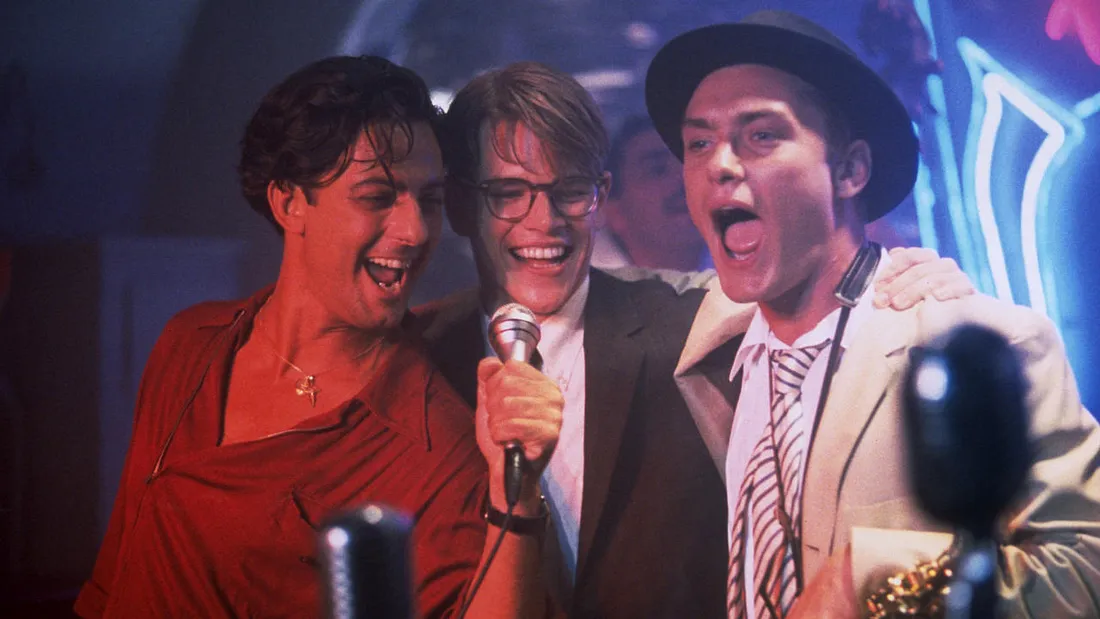The Talented Mr. Ripley
dir. Anthony Minghella, 1999

The Talented Mr. Ripley is crime and glamour set in a make-believe Italian town on the edge of the ocean. Patricia Highsmith penned the 1955 novel from which Anthony Minghella takes inspiration, but the adaptation holds its own. In short: the story centres on small bluffs that unravel into bigger deceptions.
Tom Ripley (Matt Damon) has a knack for impressions. After a case of mistaken identity and class, he’s sent to Europe to retrieve an errant Princeton classmate — Dickie Greenleaf (Jude Law) — and return him to American soil. A minor detail is that Tom never attended university. It’s a testament to how far wearing someone else’s jacket to a party can take you.
Tom hangs around with Dickie (and his money). He’s swept up in his new friend’s lifestyle and his former self is eclipsed by it. To Dickie, ‘America is like a fog.’ He assumes an Italian persona instead of accepting the preordained future that awaits him in the States. It’s a modern take on a tradition of American expats seeking cultural refuge in Europe (see: Henry James, The Ambassadors).
Dickie likes espresso and jazz. He has two girlfriends (one American, the other Italian) who pretend not to know about each other. As a ‘super rich kid’, he’s charming and self-assured. And, even though Tom basks in the warmth of the Mediterranean, to him the sun’s rays emanate from Dickie instead. Marge, his American girl (Gwyneth Paltrow), remarks on how cold she feels when Dickie moves his light from her onto others. His short attention span is not limited to lovers. Adhering to typical thriller conventions, admiration and desire run closely with envy and obsession.
As a filmic case of show-and-not-tell, Ripley is better watched without context. Secrets are partially unveiled through reflections: in mirrors, windowpanes and bodies of water. I’ve seen the film countless times but notice something new with each viewing. There’s a boat scene in which Tom perches on a bed with mirrored-doors on either side of him. As they swing back and forth with the sway of the vessel, witnessed are the various angles of his distorted image. In life we possess and present a number of faces, but clutch onto a core individual self. Tom Ripley is a blank slate — only able to exchange one mask for another.